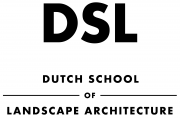Amsterdam Academy of Architecture
The Amsterdam Academy of Architecture started early 2017 with the research programme High-density energy landscapes, the successor to the programmes Foodscapes (2013-2016) and Living Landscapes (2010-2012).
High-density energy landscapes (2017)
Landscape architect Sven Stremke is the leader of the research group High-density energy landscapes. He was appointed for a period of four years and started at the beginning of 2017. His research focuses on developing sustainable energy landscapes with special attention to the role of design and the designer in the energy transition.
Food Landscapes (2013-2016)
From 2013 to 2016, the Amsterdam Academy of Architecture established the research group Foodscapes with Han Wiskerke -Professor of Rural Sociology at Wageningen University- as lecturer. The programme aimed to investigate how the rapid change of cultural landscapes in various European countries was being addressed. With students he looked for possibilities to develop more sustainable food communities at regional level through (re)design.
Lectureship Living Landscapes (2010-2013)
Until 2013 Thomas Oles was associated with the lectureship Living Landscapes. With this lectureship the Academy presented itself on the more exclusive side of the landscape education: the large scale landscape, in addition to the existing small-scale tasks in which exchanges take place between landscape architecture, urban planning and architecture. In 2013 the Academy published Oles’ vademecum ‘Go With Me: 50 Steps to Landscape Thinking’. In this ‘handbook’ Oles brought his ideas about the landscape architecture profession together.
Research fellowship Noël van Dooren
The Academy supported Noël van Dooren with a research fellowship for his PhD-research ‘Drawing Time’ about forms of representation in contemporary landscape architecture. In his research Van Dooren investigated how time in landscape can be represented, how time is represented in Dutch landscape architecture nowadays and how this can be seen as an example in an international perspective.
The research was included in the research programme of the Department of Culture, Environment and Nature of the Faculty of Humanities at the University of Amsterdam.
More information:
